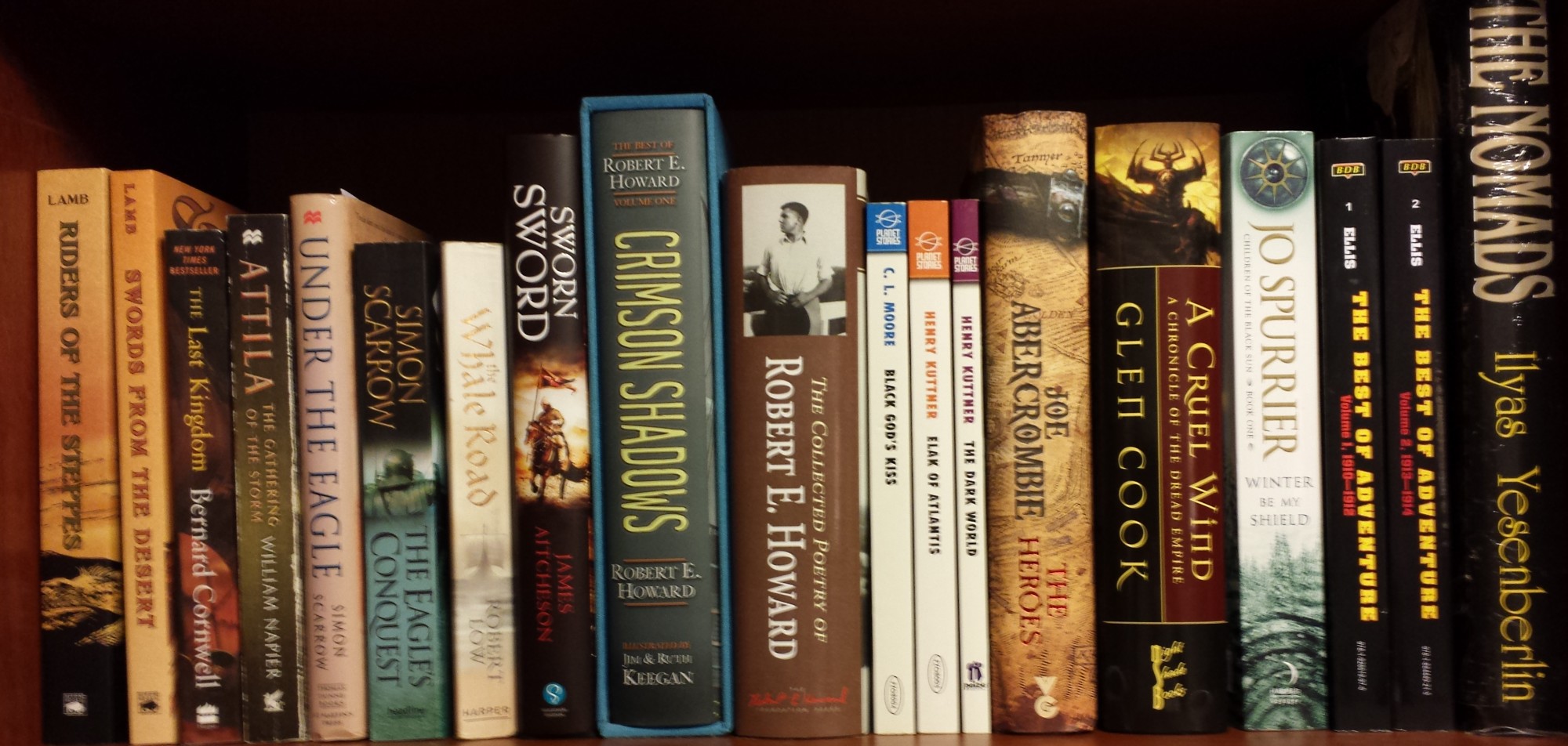We are pleased to announce the opening of nominations for the 2022 Robert E. Howard Awards. The Robert E. Howard Foundation has revised the rules and categories for the awards, so please read over the information below. Some categories have changed, and there is a new category for works of fiction. Under the new rules, nominations are due in to the Awards committee by January 31, 2022, with the Awards committee selecting the top nominees in each category for the final ballot by February 15, 2022. The Final ballot will be sent out to all current Robert E. Howard Foundation members (members who have paid dues for the year 2022) for voting on the winners on February 15, 2022. You do not have to currently be a member of the Robert E. Howard Foundation to send in nominees at this stage of the process. All nominees must have the name of the publication for printed works, and the internet address for works available on the internet in the nomination. Only work that was published from Jan. 1, 2021 to Dec. 31, 2021 is eligible to be nominated.
All nominations are to be sent to the following email address:
rehawardsjb ”AT” gmail ”DOT” com (replace the AT and DOT with their corresponding symbols)
Here are the revised awards and requirements for them.
Categories
Awards will be given in three categories: Scholarship, Art, and Special Awards. Works for each category may be submitted for consideration and voting. The awards will be announced at the annual Howard Days celebration.
Scholarship Awards
Scholarship Awards are focused principally on original research, biography, literary analysis, and criticism related to Robert E. Howard’s life and work. This includes studies dedicated to media (fiction, poetry, film, comics, etc.) principally concerned with Howard’s characters or work.
The Atlantean—Outstanding Achievement, Book
Requirements: Nonfiction work (print or digital), minimum 50,000 words, substantively devoted to the life and/or work of Robert E. Howard, published in the last calendar year.
Considerations: Reprinted works without significant revisions are not eligible. Award goes to the author or authors.
The Valusian—Outstanding Achievement, Anthology/Collection
Requirements: Nonfiction anthology or collection of essays (print or digital), nonfiction, minimum 50,000 words, substantively devoted to the life and/or work of Robert E. Howard, published in the last calendar year.
Considerations: Reprinted works without significant revisions are not eligible. Award goes to the editor or editors.
The Hyrkanian—Outstanding Achievement, Essay
Requirements: Nonfiction essays (print or digital), no minimum word count, substantively focused on the life and/or work of Robert E. Howard, published in the last calendar year.
Considerations: Short blog posts, news, interviews, reviews, trip reports, and other minor works are not considered. Award goes to the author or authors.
The Cimmerian—Outstanding Achievement, Scholarship (peer-reviewed)
Requirements: Scholarly essays (print or digital), no minimum word count, substantively focused on the life and/or work of Robert E. Howard, published in the last calendar year in a peer-reviewed journal or collection.
Considerations: Can be awarded separately to an essay that appears in a book that wins the Valusian. Award goes to the author or authors.
The Venarium—Emerging Scholar
Requirements: Candidates must have recently begun making significant contributions to Howard scholarship through publications and/or presentations over the past few years.
Considerations: Previous winners are not eligible. Award goes to the individual.
Art Awards
One of the missions of the Robert E. Howard Foundation is to promote Howard’s creative legacy as well as his study. Art awards recognize achievement in creative fields related to Robert E. Howard’s life and work.
The Black Lotus—Outstanding Achievement, Web-based
Requirements: Web-based content (i.e. digital magazine, journals, websites, blogs, podcasts, audiovisual/multimedia presentations, internet sites, etc.), substantively focused on the life and/or work of Robert E. Howard, new content must have been published in the last calendar year.
Considerations: Non-static social media like Facebook and Twitter would not be eligible. Award goes to site owner/administrator.
The Costigan—Literary achievement
Awarded for original creative writing that carries on the spirit and tradition of Robert E. Howard, to better recognize and celebrate his influence on future generations of writers.
Requirements: Fiction (i.e. short fiction, novels, comic books, etc.), in the spirit and tradition of Robert E. Howard, published in the last calendar year.
Considerations: Work must be substantial and original in content; translations and adaptations will not be considered. Award goes to the individual writer or writing team.
The Rankin—Artistic achievement
Requirements: Visual media (painting, comics art & covers, film, etc.), directly related to the depiction of Robert E. Howard’s life, characters, or fictional worlds; published in the last calendar year.
Considerations: Work must be substantial and original in content. Award goes to the individual artist.
Special Awards
Some achievements deserve recognition, but do not fit neatly into easy categories, nor are they likely to be handed out every year. Those who have made some substantial achievement in scholarship or particular contribution to Howard studies, may be eligible for a Crom Award. Those who have made a significant contribution over a long involvement with Howard Studies may be eligible to join the Black Circle. The Select Committee will collect nominations, but these special awards will be voted on privately by the Board of Directors. The winners will be announced at the end of the award program.
The Awards Committee thanks you for your help in recognizing these deserving people.






